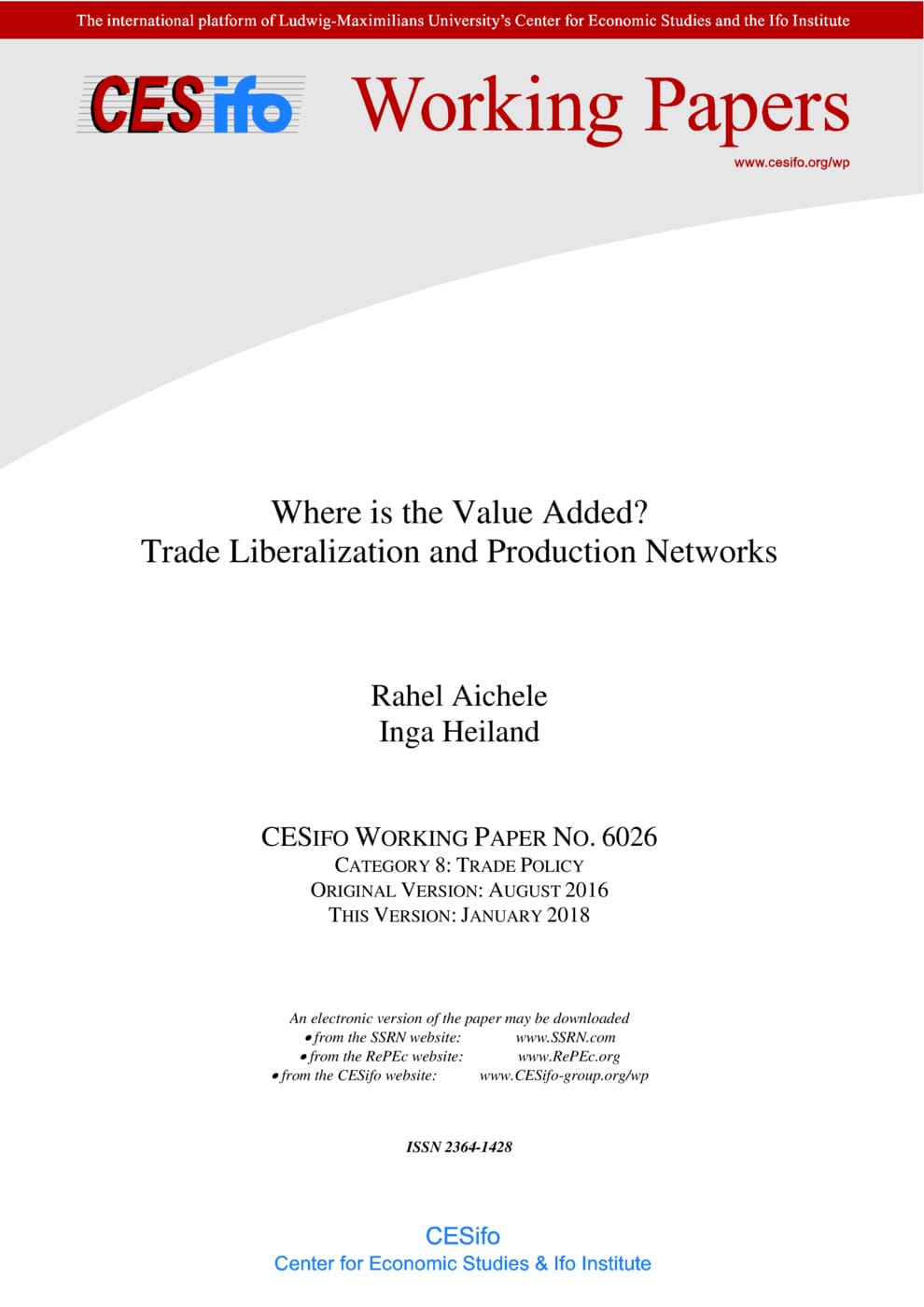Where is the Value Added? Trade Liberalization and Production Networks
CESifo, Munich, 2016
CESifo Working Paper No. 6026

To what extent has trade liberalization contributed to global production fragmentation and the formation of production networks? We derive structural equations for value added trade ows, the domestic value added content of exports (DVA) and the value added to exports (VAX) ratio, as well as modelbased measures for production networks from a multi-sector gravity model with inter-sectoral linkages. We calibrate the model and perform a counterfactual analysis of China's WTO accession in 2001. We find that the associated trade cost changes spurred global production fragmentation, explaining about 6-12% of the decrease in the world DVA ratio as observed between 2000 and 2007. For China, the counterfactual experiment robustly replicates the increase in its DVA ratio, driven by the export-processing zones. Furthermore, our results imply that China's WTO accession was a driving force behind the strengthening of production networks with its neighbors.
Trade Policy
Empirical and Theoretical Methods